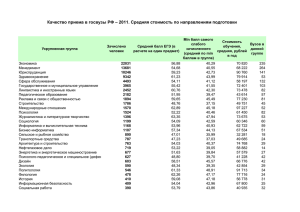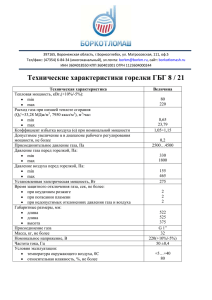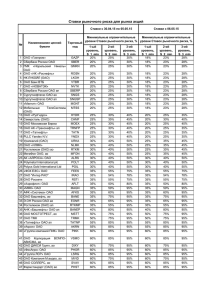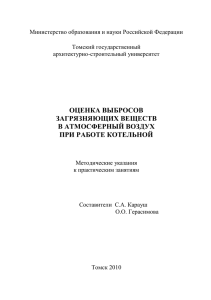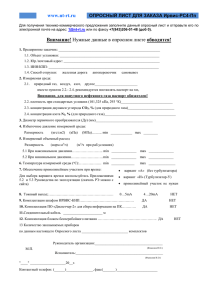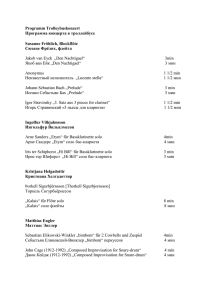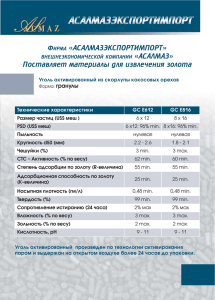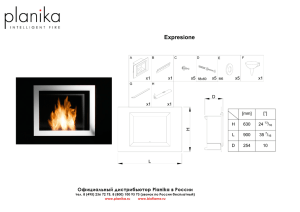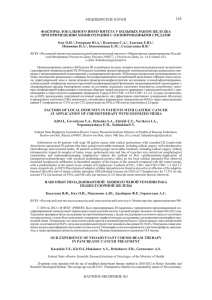Низкопоточная анестезия
advertisement
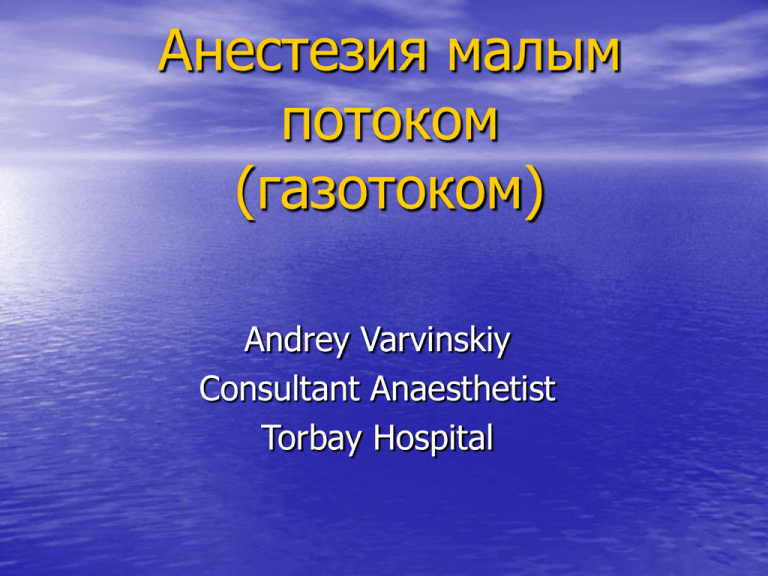
Анестезия малым потоком (газотоком) Andrey Varvinskiy Consultant Anaesthetist Torbay Hospital Классификация потока SIMIONESCU 1986 (Модификация Baker AB 1994) • • • • • • ОЧЕНЬ ВЫСОКИЙ ПОТОК ВЫСОКИЙ ПОТОК СРЕДНИЙ ПОТОК НИЗКИЙ ПОТОК МИНИМАЛЬНЫЙ ПОТОК МЕТАБОЛИЧЕСКИЙ ПОТОК - > 4 л/мин 2- 4 1-2 500- 1000 мл/мин 250-500 250 (Baker A.B. “Low flow and closed circuits”, Anaesth Intensive Care 1994; 22:341-2) ЗАЧЕМ НУЖЕН НИЗКИЙ ПОТОК • ЭКОНОМИЧЕСКИЕ АСПЕКТЫ • ФАКТОРЫ ОКРУЖАЮЩЕЙ СРЕДЫ • ДОСТИЖЕНИЯ В МОНИТОРИНГЕ • НОВЫЕ ДОРОГИЕ АНЕСТЕТИКИ ПРЕИМУЩЕСТВА НИЗКОГО/МИНИМАЛЬНОГО ПОТОКА • ЭКОНОМИЧЕСКИЕ: В основном анестетики. Почасовые затраты ниже> 50% • ОКРУЖАЮЩАЯ СРЕДА 3-12% от общего • выброса N20, Cl разрушает озонный слой, анестезия - 0.01% от общего КОНСЕРВАЦИЯ ТЕПЛА И ВЛАГИ: 31°C при 0.6 л/мин после 120 мин 24°C при 6 л/мин 21g H20/л при 0.6 л/мин 14g H20/л при 6 л/мин Общий принцип • Чем ниже газоток, тем меньшее количество газа • • уходит из дыхательного контура в виде избытка и тем больше пропорция повторного вдыхания газов. Термин «Анестезия низким потоком» относится к методике анестезии в полузакрытом контуре, когда не менее 50% выдыхаемой газовой смеси возвращается назад пациенту после абсорбции CO2 То есть, используя современные круговые дыхательные контуры этого можно достичь при снижении газотока как минимум до 2 л/мин Годовой Расход (Torbay Hospital) Ингаляционные 1997-98 2001-02 Анестетики Всего £34,816.39 £29,178.12 СЕВО £8,858.36 £19,633.77 Малый поток снижает расход анестетиков • Университет Michigan: 1.5l/min • • • с $19.20 до $15.16 на анестезию Norwick Park Hospital: >50% почасовые расходы Pedersen et al: ISO с 40.8 до 7.9 мл за 2 часа Feiss 40% экономия по N2O, с 9200kg до 5880 в год Аудит больницы Тоrbay по потоку Консультанты Fresh gas flow (l/min) 6 5 4 3 2 1 0 1 2 3 4 5 6 7 8 9 Consultant 10 11 12 13 Registrars Fresh gas flow (l/min) 6 5 4 3 2 1 0 1 2 3 4 5 Registrar 6 7 8 9 Fresh gas flows (l/min) SHO 6 5 4 3 2 1 0 1 2 3 4 SHO 5 6 7 Расчет Расходов •РАСХОД= время(мин) x газоток(мл) x % x цена [100%-%] x размер флакона (мл) x мл пара на мл жидкого анестетика (Sevo - 182.7) Thwates et al, 1997 Цена SEVO S E V O % (£ в час) на поддержание 4.0 2.02 3.37 6.73 13.46 20.20 27.00 3.0 1.50 2.50 5.00 9.99 14.99 19.99 2.0 0.99 1.65 3.30 6.59 9.89 13.19 1.0 0.49 0.82 1.63 3.36 4.90 6.53 0.5 0.24 0.41 0.82 1.63 3.36 4.90 3.0 4.0 0.30 0.50 1.0 2.0 Газоток (л/мин) Thwates et al, 1997 ДРУГИЕ ГАЗЫ В КОНТУРЕ • АЗОТ (2-2.5л в ФОЁЛ, 4л в контуре) и • • медленное вымывание (0.7л) из всего организма. Может вести к небольшому накапливанию в контуре МЕТАН Вырабатывается кишечной флорой. Может аккумулировать после 14h до % поддерживающего горение (5.4% в 02) АЦЕТОН Печеночный метаболизм. Вызывает ПОТР (PONV), замедление просыпания. Важно у больных с диабетом, циррозом и длительном предоперационном голодании ДЕГРАДАЦИЯ АНЕСТЕТИКОВ В КОНТУРЕ • CO DES>ENF>ISO Baralyme>Sodalyme если • • высыхает при длительном высоком потоке Субстанция A (SEVO), факторы: высокий МОВ, низкий газоток, высокая Т абсорбента, Baralyme >sodalyme, высокая концентрация анестетиков Нефротоксичность у крыс. Нет данных о проблемах у людей Minimal flow sevoflurane and isoflurane anaesthesia and impact on renal function C. Goeters*, C. Reinhardt*, E. Gronau*, R. Wüsten*, T. Prien*, J. Baum, S. Vrana and H. Van Aken* • Образовании Compound при анестезии Севофлюраном зависит от газотока. Мы исследовали размер образования Сompound A. • • patients with normal renal function were randomized to receive either sevoflurane (n = 33) or isoflurane (n = 43) minimal flow anaesthesia (0.5 L min 1) for at least 2 h under standardized conditions. Compound A concentrations were quantified and blood and urine samples were taken to assess renal involvement. Both groups were comparable. No significant differences concerning blood chemistry and urine measurements were found. The maximum mean compound A concentration was observed 90 min after flow reduction being 40 ± 9 p.p.m. at a corresponding mean sevoflurane concentration of 2.1 ± 0.5 vol%. Mean inspiratory compound A exposure was 102 ± 33 p.p.m h 1. • Вывод: Концентрация Compound A при газотоке 0.5 L min 1 была выше, чем при ранее опубликованных данных при 1 L min 1. Не было замечено изменений в функции почек и печени. Sevoflurane low-flow anaesthesia: best strategy to reduce Compound A concentration A. DI FILIPPO1, F. MARINI1, M. PACENTI2, S. DUGHERI2, L. FOCARDI2 and G. P. NOVELLI1 Acta Anaesthesiol Scand 2002; 46: 1017–1020 Copyright C Acta Anaesthesiol Scand 2002 • • Background: To define the best strategy to reduce Compound A production in Sevoflurane low-flow anaesthesia by experiments in vitro and in vivo of different absorbers and different anaesthesia machines. Methods: In vitro Compound A has been measured at 45C in vitro following Sevoflurane interactions with potassium hydroxide, sodium hydroxide, soda lime, Dragersorb 800 Plus and Amsorb, новый абсорбент не гидроксида натрия или калия In vivo Compound A concentration in the anaesthesia circuit (inspiratory branch) has been measured using an indirect sampling method through absorber vials (SKC) with active coal granules, during low flows (500ml/min) general anaesthesia using soda lime, Dragersorb 800 Plus or Amsorb as absorber. Compound A was also measured during low flows (500 ml/min) general anaesthesia using as carbon dioxide absorber soda lime with different anaesthesia machines. • Results: In vitro при 45C концентрация Compound A при использовании Dragersorb 800 Plus была в 10 раз выше, чем с Amsorb. In vivo the Compound A concentrations in the inspiratory branch of the circuit were lower in the group with Amsorb. • Conclusion:Образование Compound минимально с использованием Amsorb. Стратегия анестезии низкого потока Добавлять в контур только количество анестетика, потребляемого больным, таким образом уменьшая выброс его в атмосферу и излишний расход. ПРАКТИЧЕСКИЕ АСПЕКТЫ • Рутинный МОНИТОРИНГ • АППАРАТУРА: контур без утечек с • • абсорбером, ротаметр с калибровкой < 1л/мин 5-10 мин – высокий поток + методика overpressure на испарителе с высокорастворимыми – HAL (но не с низко, SEVO) анестетиками Потребление O2 постоянно - 3ml/kg, N20 снижается со временем (0.5л/мин- 15-20 мин, 0.4 -15-20мин, 0.3-30мин, 0.2-30мин для достижения FiO2 выше 30% Низкий поток с ISO • 1.5 l/min O2+1.5 l/min N2O for 5-15 min • 1 l/min O2+1 l/min N2O for 5-15 min • 0.5 l/minO2+0.5 l/min N2O for 5-15 min • Потребление ISO очень высоко в первые • • несколько мин По мере С в крови потребление , но высокорастворимый ISO продолжает идти в мышцы и жировой сектор При газотоке 3 л/мин доставка ISO превышает потребление и более 80% уходит в атмосферу!!! Ещё практические советы • «C» анестетика в контуре около 50% от • • • • • • установки на испарителе у растворимых (ISO) и ближе к истинному у SEVO &DES Если требуется срочное изменение глубины – увеличение гаотока Выключите за 10-15 мин до конца Если контур открывается - газоток для повторной денитрогенизации Настройки вентилятора (ДО и МОВ) Свежий абсорбент Каждые 3-4 часа продувка контура “Clear Flo Circle System” Intersurgical Анестезия в дневном стационаре • 25 лет, мужчина • Удаление зубов мудрости • ASA II • Избыточный вес, курильщик • MP II • NKDA Методика анестезии • • • • • • • • • 18G IV cannula Otrivine спрэй в ноздрю 2 mg alfentanyl(30мсг/кг) 200 mg propofol Без миорелаксантов Интубация через нос, 6.5 ETT Марлевый тампон Dexamethasone 8 mg, Augmentine 1.2g Hartmann’s 1L Step I Anaesthetic Room • 2 l/min O2 •8 % SEVO Anaesthetic Room (Monitoring) Step II Операционная • 1l/min O2 • 1l/min воздух • 8% SEVO Step II Операционная • Проверка ET SEVO Step III Операционная • 0.5 l/min O2 • 0.5 l/min air • 8% SEVO Проверка ET SEVO Step IV Операционная • 0.5 l/min O2 • 0.5 l/min воздуха • 5% SEVO Проверка ET SEVO Step V Поиск желаемой ЕТ концентрации SEVO • 0.5 l/min O2 • 0.5 l/min воздуха • 4% SEVO Может маловато? Поиск желаемой ЕТ концентрации SEVO Назад • 0.5 l/min O2 • 0.5 l/min воздуха • 5% SEVO Как закончить анестезию • 5-8 мин до конца операции: Выключите SEVO • Закройте воздух Air • Только O2 0.5 l/min • ET SEVO снижается медленно и плавно. Сплошная экономия! Закройте контур между наркозами! • O2 200ml/min • Контур частично остаётся заполненным SEVO • Целевая ET SEVO ещё быстрее у следующего больного • Потребление SEVO в операционной • За 2 часа • 3 больных Сравнение по затратам Comparison of sevoflurane and TIVA for daycase urological surgery W.H.Fish et al Anaesthesia 1999,54, 999-1006 TIVA (500mg Prop+125 mcg remifentanil) £8.85 SEVO (VIMA) £8.08 (Bain – круговой контур + alfentanil) Было бы еще дешевле, если бы с самого начала круговой Время выхода из анестезии – не было статистической разницы Target-controlled propofol vs. sevoflurane: a double-blind, randomised comparison in day-case anaesthesia. Smith,-I; Thwaites,-A-J Anaesthesia. 1999 Aug; 54(8): 745-52 • TCI propofol v sevoflurane in RCT in 61 day-case patients. Anaesthesia was induced with a propofol target of 8 microgram.ml-1 or 8% sevoflurane, reduced to 4 microgram.ml-1 and 3%, respectively. • Mean times to unconsciousness and LMA insertion were significantly shorter with propofol [50 (9) s and 116 (33) s, respectively] than with sevoflurane [73 0.0003, respectively]; observer. 14) s and 146 (29) s; p < 0.0001 and p = however, these differences were not apparent to the blinded • Propofol was associated with a higher incidence of intra-operative movement (55 vs. 10%; p = 0.0003), necessitating more adjustments to the d delivered anaesthetic. • Emergence was faster after sevoflurane [5.3 (2.2) min vs 7.1 (3.7) min; p = 0.027], more nausea and vomiting (30 vs. 3%; p = 0.006), which delayed discharge [258 (102) min vs. 193 (68) min; p = 0.005]. • Direct costs were lower with sevoflurane but nausea would have increased indirect costs. • Patient satisfaction was high (>/= 90%) with both techniques. • In conclusion, both techniques had advantages and disadvantages for day-case anaesthesia Recovery characteristics using single-breath 8% sevoflurane or propofol for induction of anaesthesia in day-case arthroscopy patients A. K. Dashfield, D. J. Birt, J. Thurlow, I. G. Kestin and J. A. Langton Anaesthesia, 1998, 53, pages 1062–1066 • induction and recovery characteristics following inhalational induction with 8% sevoflurane in nitrous oxide and oxygen compared with intravenous propofol in 40 patients presenting for arthroscopy of the knee. Anaesthesia was then maintained with sevoflurane in oxygen and nitrous oxide. • The sevoflurane group had a faster onset of anaesthesia time. No significant differences between the groups were found in time to eye opening or psychomotor tests . • Nausea and vomiting scores were significantly higher at 30 min in the sevoflurane group (p¼ 0.04); this difference was no longer significant by 90 min. • conclude that inhalational induction with sevoflurane in these patients has no important clinical advantages and causes more nausea and vomiting than propofol. Recovery characteristics using single-breath 8% sevoflurane or propofol for induction of anaesthesia in day-case arthroscopy patients A. K. Dashfield, D. J. Birt, J. Thurlow, I. G. Kestin and J. A. Langton Anaesthesia, 1998, 53, pages 1062–1066 Three patients in the propofol group required assisted ventilation with 100% oxygen for a short period of time following induction of anaesthesia. Assisted ventilation was not necessary in the sevoflurane group. Anaesthesia for cardioversion: a comparison of sevoflurane and propofol S. Karthikeyan,1 S. Balachandran,1 J. Cort,2 M. H. Cross3 and M. Parsloe4 • compared the induction time, haemodynamic changes, recovery characteristics and patient satisfaction for sevoflurane and propofol when used as the main anaesthetic agents for cardioversion. • 61 patients, elective cardioversion were anaesthetised with either inhaled sevoflurane 8% or an intravenous propofol TCI set at 6 lg.ml)1. • There was no significant difference in induction time between the two groups: mean (SD) ¼ 90.1(40) s in the sevoflurane group vs. 83.7(35) s in the propofol group. • Mean (SD) time to recovery was significantly shorter in the sevoflurane group than in the propofol group: 318 (127) s vs. 738 (355) s, respectively, p < 0.001. • At recovery, the patients in the propofol group had significantly lower systolic and diastolic blood pressures than those in the sevoflurane group, p < 0.001. Anaesthesia for cardioversion: a comparison of sevoflurane and propofol S. Karthikeyan,1 S. Balachandran,1 J. Cort,2 M. H. Cross3 and M. Parsloe4 • In contrast to previous studies the incidence of PONV was similar but low in both groups (1 v 2). This may be due to the opioid-free anaesthetic technique. • Patient satisfaction was similar for both agents, with pain on injection being the main reason for complaint in 16% of the propofol group and the unpleasant smell being the main complaint in 18% of the sevoflurane patients. • We conclude that sevoflurane is a suitable choice for anaesthesia for cardioversion and may provide greater haemodynamic stability than a targetcontrolled infusion of propofol. Sevoflurane provides better recovery than propofol plus fentanyl in anaesthesia for day-care surgery. Peduto,-V-A; Mezzetti,-D; Properzi,-M; Giorgini,-C Eur-J-Anaesthesiol. 2000 Feb; 17(2): 138-43 • To compare ease of maintenance and recovery • characteristics of sevoflurane and propofol plus fentanyl in day-care anaesthesia 60 outpatients undergoing elective surgery of up to 3 h duration were randomized to receive sevoflurane or propofol as their primary anaesthetic. Induction was always carried out with propofol, but a fentanyl bolus 5 microg kg-1 was added in the propofol group. Anaesthesia was supplemented with up to 70% N2O. • Significantly shorter times to extubation (10.03 min +/- 3.2 SD vs. 17.2 +/- 7.3; and emergence (10.4 +/- 3.1 vs. 16.8 +/- 6.4; P < 0.001) were observed in the sevoflurane group. • Patients treated with sevoflurane felt less confused P < 0.001) • Maintenance of anaesthesia with sevoflurane produces faster emergence and recovery than propofol plus fentanyl after anaesthesia of short to intermediate duration. Предлагаемая методика • Индукция по выбору больного • Поддержание SEVO O2+воздух • Не надо больше 2л/мин газотока • Избегайте опиоидов, если возможно Feedback from patients treated in DSU 2002-2003 Dr Varvinski • 197 pts, age 2-90 • 3 поступления (1.7%):1-pain, 2postop bleed • Общее впечатление: 21-Vgood, 71-Good, • • • • • 9-reasonable, 1-Bad, 77-no feedback Тошнота: 96-нет, 2-несильная Рвота: 97-нет, 1- однажды Drowsiness:92-none, 5-mild Pain:43-none,53,mild,2-moderate Satisfaction: 92-Very,8-satisfied, 0- not satisfied Выводы • Простая и традиционная • Всегда проводится преоксигенация • Безопасно, не надо дополнительного • • • • • оборудования Легко измерять выдыхаемую концентрацию Один препарат, если VIMA Быстрый выход из анестезии Более стабильная гемодинамика и дыхание Дешевле, чем TIVA Выводы • Без N2O – окружающая среда • В SEVO нет атома Cl – нет повреждения азота • Сохранение тепла и влаги • Выше PONV? ??????
